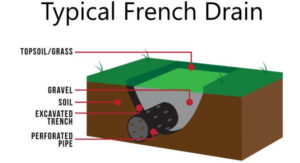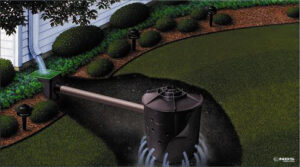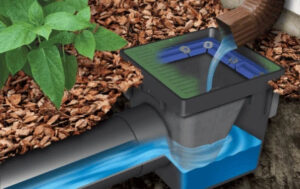French Drains and other Landscape Drainage
In this blog we will go over French drains as well as other drainage methods we use to protect and preserve your property.
Drainage Solutions
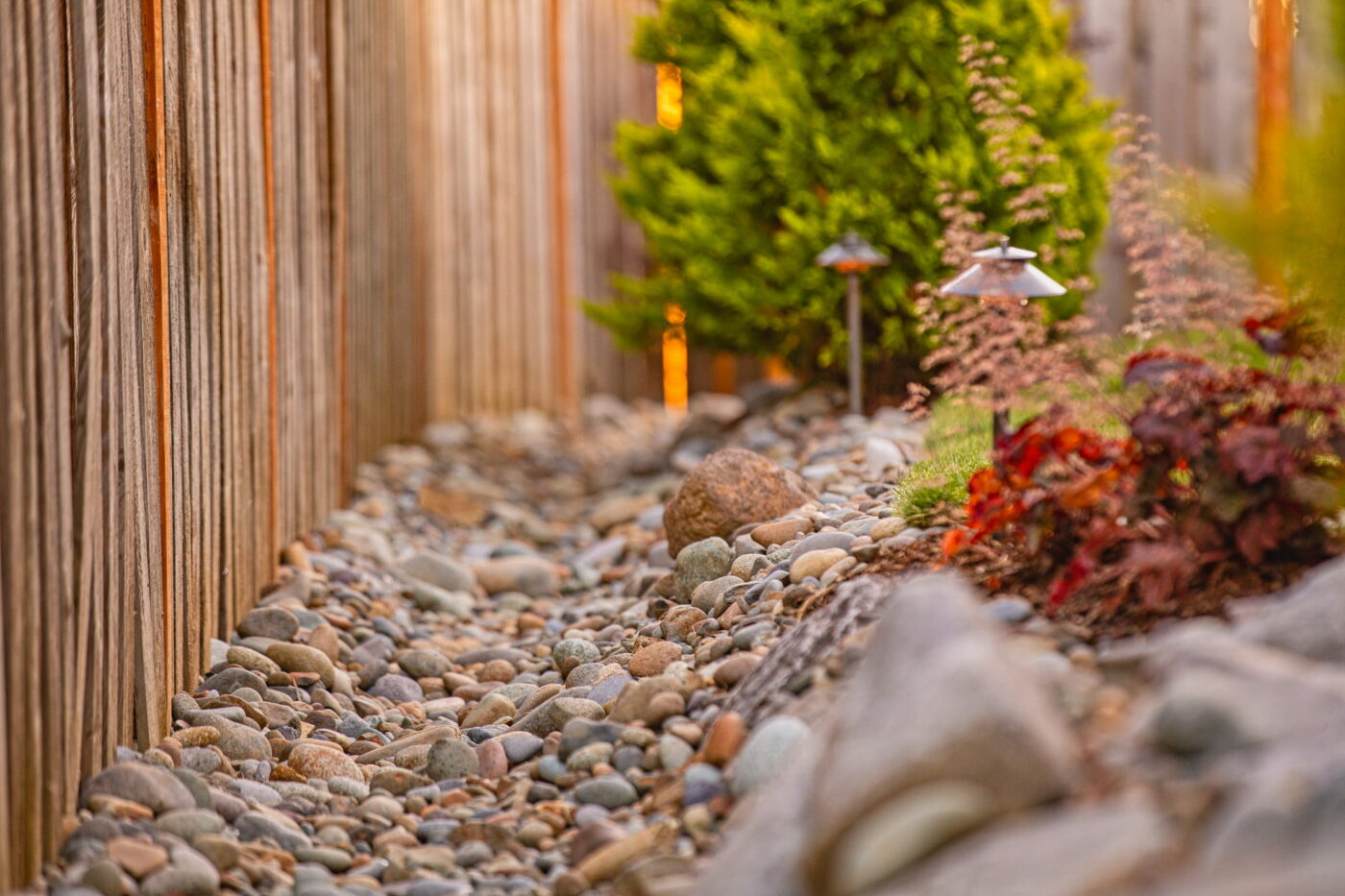
For Drainage Solutions, Contact Us Today.
One of the most critical landscape features here in the Northwest is landscaping drainage. We can get upwards of 100 inches of rainfall each year and without landscape drainage this water can flood your house and erode your landscape. In this blog we will go over French drains as well as other drainage methods we use to protect and preserve your property.
French Drains in Vancouver, WA
French drains were invented in 1859 and are still a valid solution for moving water off your property. The underlying concept is quite simple: provide water with a path of least resistance off your property. French drains typically consist of a sloped trench inlaid with landscape fabric, a perforated pipe, and then filled with gravel larger than the perforations. These drains can be covered with river rock, turf, or whatever your landscaping needs. This versatility and simplicity has led to their proliferation throughout the world.
French Drain Landscape Designers in Vancouver, WA
French drains are often one to two feet deep and placed around foundations and in areas that are prone to flooding on your property. The size of the drain aggregate can vary from pea gravel to larger river rocks based on the soil types and other site conditions. Filter sleeves are often placed over the piping in order to prevent debris from entering and clogging the perforations. Sloping of the drain is essential and must be consistent throughout the drainage system to prevent pooling and stagnation.
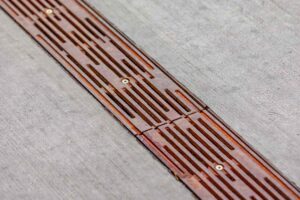
Channel drains
Channel drains consist of drainage that prevents the pooling of water on impervious ground. They’re commonly used to keep pool patios dry, prevent water from entering garages, and to clear puddles from any paved area. It is best to install channel drains with the pavement rather than after to save time, money, and headache. Channel drains, like french drains, are just one aspect of a drainage system and will need to be connected to a system that stores or expels excess water off of your property.
Dry Wells
One such way to store excess water is a dry well. These tanks are installed below ground and gather excess rainwater. The water then drains naturally from the well rather than from your lawn. Dry wells typically hold 50 gallons of water or more and are perforated like the french drain pipe to allow water to disperse from them. The dry well is installed similarly to the french drain by first excavating and then lining with landscape fabric, gravel, the well, and burying it with more gravel. When dry wells are full, the excess water will be directed to a pop-up emitter. These are located away from the well and direct excess water into sewer, streams, or whatever appropriate runoff system is near the perimeter of your property.
Catch Basin
Catch basins are either installed below downspouts to immediately direct rooftop rainwater into your landscape drainage system or at low points in your landscape to prevent pools of water from forming. Catch basins, aka yard drains, are typically large boxes with grates on the top. They can sit flush with turf and mulch or be buried below river rock and gravel. The main goal of these devices is to efficiently carry large amounts of water from high traffic runoff channels into your drainage system to ultimately be expelled off your property or stored for later irrigation use.
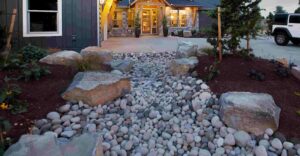
Dry Creek Beds
Dry creek beds work by creating extra volume below your landscape’s surface for excess rainwater to populate (rather than pooling on the surface). This volume is created by excavating the ground, lining it with landscape fabric, and filling this space with large river rocks. The gaps between the rocks below the surface will not fill with soil because of the landscape fabric barrier and thus continually serve as a reservoir for express rainwater. This can be a more visually pleasing solution to excess rainwater than a dry well.
Rain Barrels
Lastly on our list is rain barrels. These devices work to capture rainwater for later use. The most common use of the collected water is irrigation but people also filter it and run it back into their house for plumbing, bathing, etc… The most important thing to consider when purchasing and installing rain barrels is the overflow system. It is common for rain barrel overflow to cause flooding because it’s not properly directed into the landscape drainage system.
For Drainage Solutions in the Vancouver, WA, and Portland, OR, area, look no further than GRO. Our landscape designers and experts get the job done right the first time to save you time, headache, and money. For more information on our drainage systems and more please visit our drainage page.

